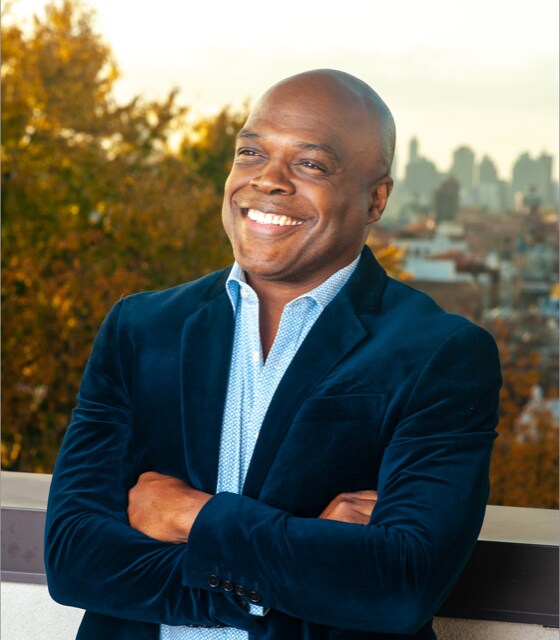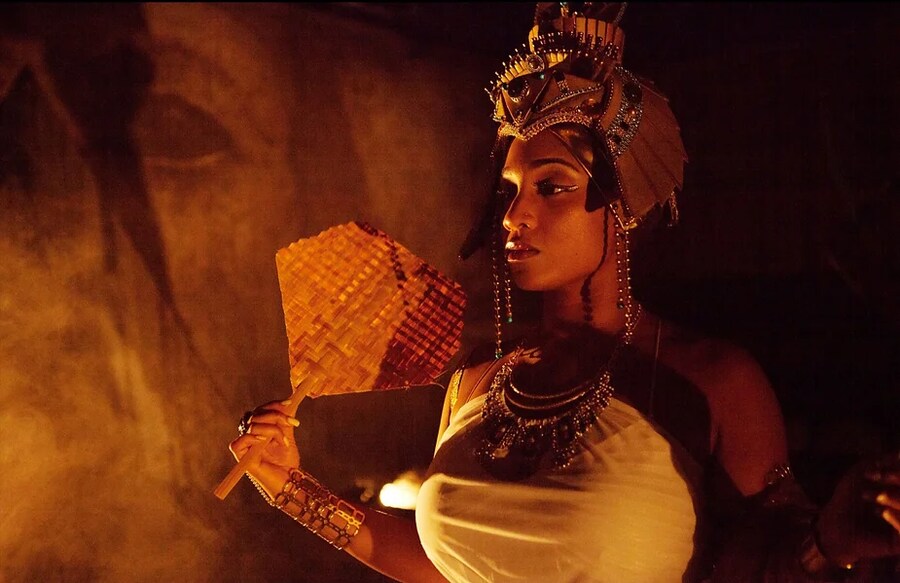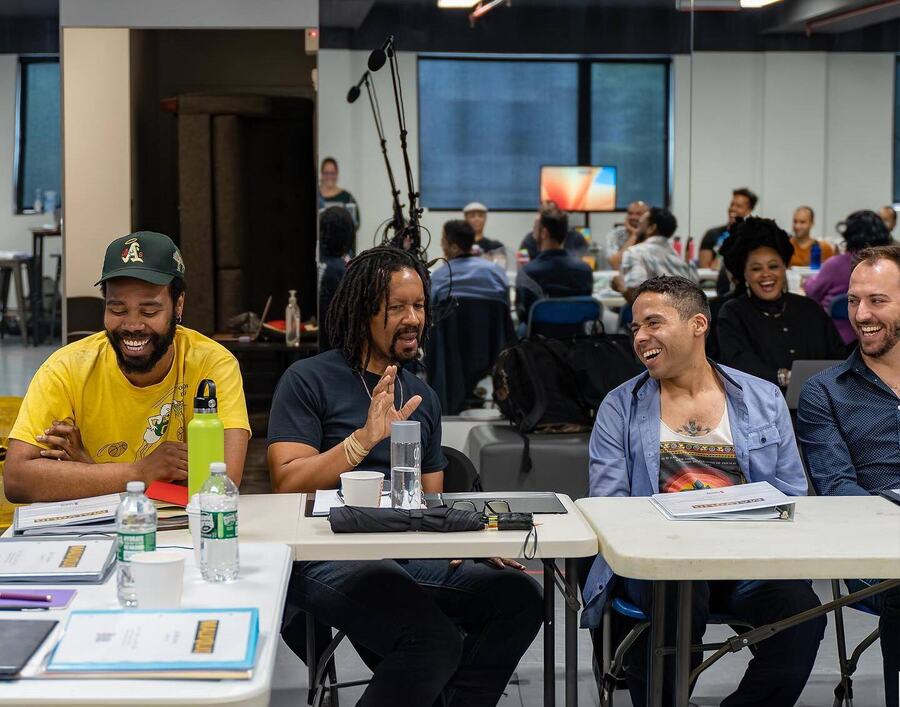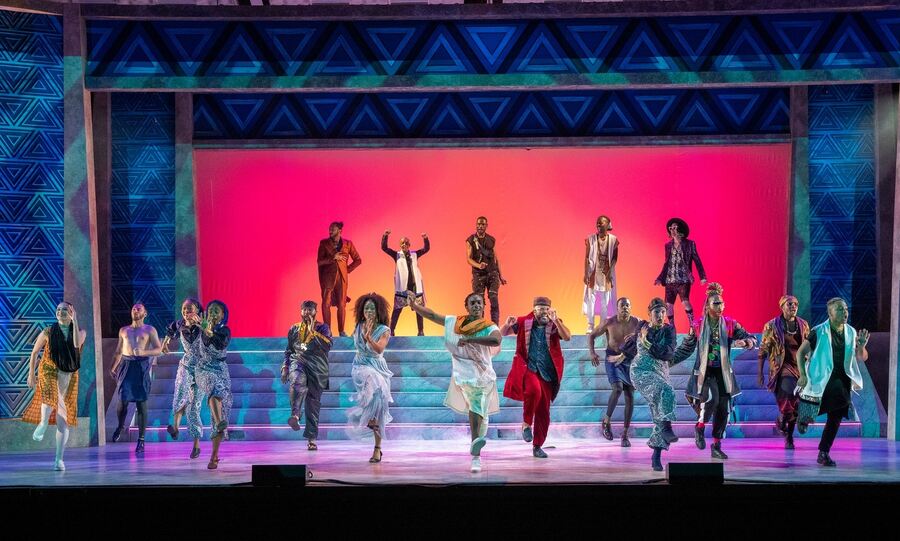The season of outdoor summer theatre is already upon us, and not just in Central Park. Exactly one mile north of the Delacorte is the Richard Rodgers Stage in Marcus Garvey Park, where the Classical Theatre of Harlem has been staging its own takes on the classics for free since 2013, and where the next offering is Malvolio, Betty Shamieh’s spin on the petulant quasi-villain from Twelfth Night, running July 8-29. Apart from the Rodgers stage, the theatre has no year-round theatre to call home (they have staged winter holiday shows at various venues, including the Apollo and City College), but that may change in future years: Its board has unveiled plans to build the Harlem Classical Arts Complex, a live performing arts complex in Central Harlem, which would be the home not only of CTH but the Harlem Chamber Players and the Harlem Opera Theater. We spoke recently via email with Ty Jones, who has served as CTH’s artistic director since 2009.
AMERICAN THEATRE: When and why was Classical Theatre of Harlem founded?

TY JONES: The Classical Theatre of Harlem was founded in 1999 at the Harlem School of the Arts with the goal of creating a theatre company that would celebrate and reimagine classical works, while providing a platform for underrepresented voices, particularly those of people of color.
What sets your theatre apart from others in your region?
What essentially sets us apart is our mission. It is to maintain a professional theatre company dedicated to returning the classics to the stages of Harlem; to create employment and educational outreach opportunities in the theatre arts; to create and nurture a new, young, and culturally diverse audience for the classics; and to heighten the awareness of theatre and of great art in Harlem.
Tell us about your favorite theatre institution other than your own, and why you admire it.
Epic Theatre Ensemble. I’ve personally witnessed their commitment to young students having a life in the arts—and, if they choose otherwise, they have the life skills to find success in anything they choose to do. But my main admiration is for theatre itself, which can be done anywhere by anyone.
How do you pick the plays you put on your stage?
In choosing plays we try to take the pulse on what is happening in the world. For example, in 2016 we chose to do Macbeth because I think it is one of Shakespeare’s most politically significant plays—and 2016 was a politically significant year. That same season we did a play called Fit for a Queen, by our current Mellon Foundation Playwright in Residence, Betty Shamieh, which explores the reign of Queen Hatshepsut, a woman who ruled the ancient world, claiming the male title of pharaoh. I chose this play in anticipation of a woman taking the reins in the United States in the election cycle. The following year we did Three Musketeers, which explores the theme of being from different backgrounds working together toward a common goal. In 2018, we took on a 2,000-year-old piece by Euripides called Antigone, a play about the conflict between family responsibility and government policy, which was a topic that headlined major media that year and continues until this day. We stuck with the Greeks the next year with The Bacchae, a cautionary tale about hyper-individualism, as our use of devices and social media has quarantined critical thinking. The arts have always commented on human existence, and my job is to create occasions for us to explore a deeper understanding of ourselves, others, and the world around us.

What’s your annual budget, and how many artists do you employ each season?
Our annual budget is $2.5 million. CTH employs upwards of 200 people. This is a mix of full-time, part-time, and paid internships.
How has your theatre responded to calls for racial justice and more equitable working conditions put forward in documents like We See You, White American Theater, among others?
This is a great question and frankly a very tough one. Under my leadership, the Classical Theatre of Harlem exists to respond to voices, policies, and perspectives that have been omitted and silenced. If we as Black artists choose white American theatre as “the” superlative, I suspect disappointment will soon follow—simply because the expectation that people will displace themselves in the name of diversity, equity, or inclusion is unreasonable. Self-preservation is a fundamental human trait. It’s a reality that persuades me to support the idea that creating one’s own space is a better option. However, I recognize the irony that many of us in the performing arts have graduated from institutions that are pipelines to these well-resourced flagship theatres. Therein lies the rub. How can one be faulted for actively seeking employment in spaces whose pay is far more remunerative and whose profile is seen as preferable? I understand the desire to have a seat at the table, yet I’m equally aware that I may not like the meal.
What show are you working on now? Anything else in your season that you’re especially looking forward to?
Malvolio, which premieres this July, stars Allen Gilmore as the titular character, while also featuring Tony nominee John-Andrew Morrison in this production written by our Mellon Foundation Playwright in Residence, Betty Shamieh.

Strangest or funniest thing you’ve ever seen (or put) on your stage?
Let me say that Little Amal, whom we welcomed with an event in Bryant Park, is the most unique experience I’ve seen in some time. Little Amal is an extraordinary 12-foot puppet that represents a young Syrian refugee girl created by the Handspring Puppet Company and Good Chance Theatre as part of a global project called The Walk. Imagine that a singular puppet alone engages and connects communities inspiring conversations, cultural exchanges, and collaborations that transcend borders, cultures, and backgrounds. Intentional. Purposeful. It takes me back to my early days of theatre, before I was concerned with funding, marketing, and critics.
What are you doing when you’re not doing theatre?
Husband to Jill and father to my 16-year-old cellist, Kaden, 14-year-old violinist, Roen, and our youngest, 12-year-old pianist, Emery.
What does theatre—not just your theatre, but the American or world theatre—look like in, say, 20 years?
Frankly I’m more concerned about the next two years! Though I was happy that the government came to the rescue of our sector, I do believe there were some unintended consequences with regards to the Shuttered Venue Operating Grants (SVOG) and PPP loans. Understandably, large theatres/venues were compelled to terminate and furlough staff; however, leadership at some of the spaces shared with me that they experienced a windfall due to the combination of additional foundation, government, and individual support. They also shared that their endowments swelled by anywhere between 18 and 30 percent. I suspect their finance committees captured those gains. Though these venues will also have challenges in the near future, they are better positioned to absorb inflation, increases in fees, and increases in salaries. CTH was only eligible for the PPP loans, which were specifically targeted for payroll, benefits, rent, and utilities. We were also required to spend them within a certain amount of time. The loans were essentially forgiven; however, we were left in a deficit position due to the dramatic increase in the cost of goods and services. Along with other similarly sized organizations, we are/were exposed to poaching from the well-resourced institutions.
So even though soft landings for small/mid-sized organizations will be elusive for the foreseeable future, I am of the firm belief that we are social beings. We have a natural instinctive desire to assemble, to gather, to convene. I’d wager that 20 years from now we’ll still have that desire, and a catalyst for that will always be theatre, dance, and music.
The question will be whether the arbiters of that content will be juggernauts like the Kennedy Center, Lincoln Center, Geffen or the Public, or whether we will find a way to invest in an ecosystem of middle-class performing art spaces to keep the diversity of artistic expression alive.


